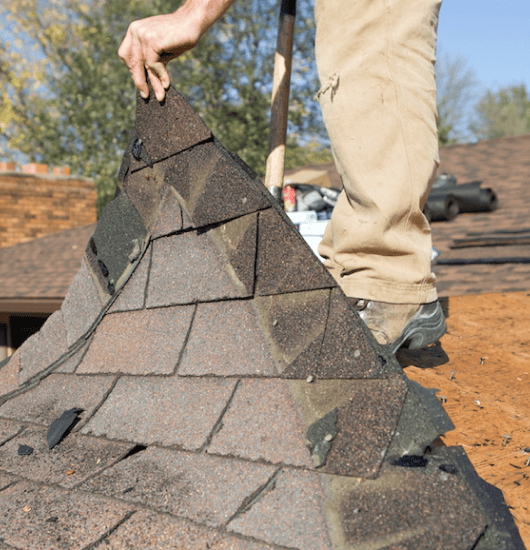Red Fox Roofing goes above and beyond for their customers! They walk you through everything whether it's an insurance claim or personally paying. They work hard and get the job done right. They show pictures before, during, and after and really give you peace of mind with a beautiful new roof. I couldn't have asked for a better experience and would definitely recommend their business.
Google
Masen and Red fox roofing did an awesome job on our roof. I would recommend him to anyone. Very professional.
Google
Excellent and very prompt service. Mason came and looked at my roof the same day I called. My r
oof was repaired within 3 days! I could not be happier! Highly recommended ????
Google
Amazing company! They did an awesome job on our roof replacement. Their customer service was honest and reliable. We were so impressed to see our roof done in one day!! If you are looking for someone to repair or replace your roof, I would highly recommend Masen and his team!!
Google
These guys are top notch! Very professional and dedicated to customer service. From the time I called, they were on my roof with in hours doing repairs. They did such an amazing job that I had them re-do the entire roof. And they did not disappoint! If you ever need someone to do roof repair or replacement, this is the company to go with.
Google
Mason came over and gave me a fair and detailed estimate. He was understanding, responsive, available, knowledgeable, and was always courteous of my time. I couldn’t have trusted a better team of people to enhance the look of my home by installing a new roof, down to the small details.
Google
The experience was very pleasant. Mason worked w me in picking out shingles &,explaining the process. I was worried about my plants & he had a friend come out & put up a wall to ward of the shingles from falling on them, It worked. One day of work. Thank you
Google
Great company! 1000/1000 recommend having Masen & his crew take care of all of your roofing needs. Our new roof is beautiful!!
Google
Awesome job! Great work. I was so excited to see my roof completed in one day!! Masen and his team was very professional, they provided honest communication and reliable results!!
Google
Red Fox Roofing did a wonderful job on a house I inherited, enabling me to get it sold. Masen was understanding of my circumstances and was willing to work with me to get the job done. I appreciate that so very much. The roof looks amazing. They kept me informed of progress. I am very satisfied.
Google
Red Fox Roofing delivered excellent service from start to finish. Professional, punctual, and highly skilled. They addressed my roofing leaks with proficiency and provided clear communication throughout the process. The quality of work and attention to detail far exceeded my expectations. I highly recommend Red Fox Rooking for any roofing needs.
J. Scott
Google
I am so happy I found Red Fox Roofing! Masen has been amazing through the whole process of dealing with my insurance company. He definitely made my life easier! His customer service is something you don’t see/expect these days. He does what he says he’s going to do, is responsive and just an all around great guy to work with. Give him your business….you won’t be disappointed!
Google
This company is EXCELLENT ????. He is knowledgeable, dependable and explains everything that he is doing. He backs it up with before and after pictures and videos. If you need roofing repairs/replacement.. DO NOT HESITATE TO CONTACT "RED FOX"???? ROOFING!!!! YOU WILL NOT BE DISAPPOINTED!!
Google
Masen and his crew did a great job replacing my roof and repairing a ceiling damaged by a water leak. Masen was also great with keeping me updated on the project and answering my questions and calls. His work ethics are remarkable, and his knowledge of roofing is outstanding. My roof and celing look great! I am beyond satisfied!
Google
Great Roofing company. Red Fox Roofing, everyone should call when replacing your roof.
Google
Very professional and responsive. They got my roof replaced quickly and without any issues.
Google
Masen, owner of Red Fox Roofing, has been awesome!! He has replaced several of my clients' and neighbors' roofs. He is very knowledgeable and efficient when dealing with insurance companies as well. I cannot say enough about Masen and his crew!! He is quick to get the job done!!
Google
Red Fox roofing has worked magic for our home! We want to say thank you so much to you guys for everything. If you are in need of a new roof they will not disappoint.
They are great at very responsive in communication and they were able to get the roof done in one days time . It’s incredible!! Red Fox Roofing is not a company they feel like family.
Google
Cant tell you how respectable this company is. Worked with me since day 1 and saw it all the way through till a new roof was installed. Recommend to anyone thinking about it. If there was a 6th star they would get it
Google
Red Fox Roofing company was a pleasure to work with because Masen Mickalis takes his time to explain the work to be done. My roof is absolutely beautiful and I am very pleased. Thank yall
Google
Masen went above and beyond helping an elderly family member through the entire roofing process. He was diligent, making sure the insurance company paid for the entire thing besides the deductible. The crews that did the roofing were professional as well. The entire roof was ripped off and new one installed all in one day. I was amazed by how efficient and clean those guys were. 10/10, 5 stars, two thumbs up, will shop again.
Google
Masen provides excellent service, timely, efficient and super cleanup during and after
Google
These guys were phenomenal! They were on time, professional, the quality of work was top notch, the price was VERY good, and most importantly...aside from there being a brand new roof, you would've never known they were there, the cleanup was immaculate! Would definitely recommend them
Google
Thanks, Masen and Team at Red Fox Roofing. Reasonable quote and work done in less than one day!
Google
Professional, honest, relatable, reliable, relational, reasonable, and quality. These are the characteristics that come to mind when I think about Red Fox Roofing.
Masen and his crew worked quickly and efficiently to remove old roofing materials, replace damaged sheeting, and put in a nice looking roof that I am confident will weather the storms.
From bid to roof completion, the professionalism of Red Fox was second to none. Thanks for a great experience Red Fox!
Google























